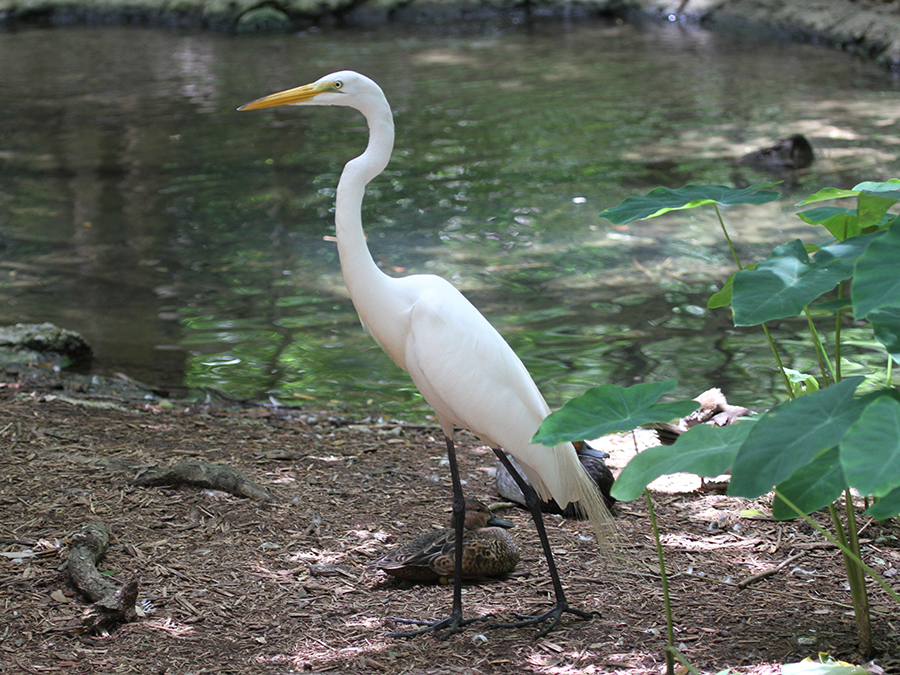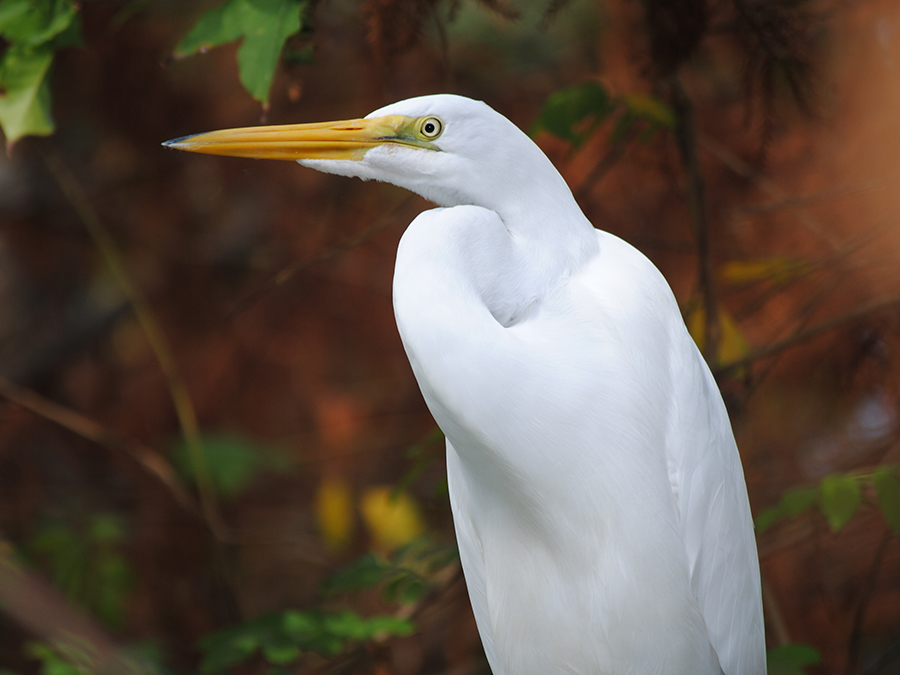Great Egret
Ardea alba
CLASS Aves | ORDER Ciconiiformes | FAMILY ArdeidaeRANGE From southern Canada southward to Argentina, and in Europe, Africa, Asia, and Australia
HABITAT Salt and freshwater marshes, marshy ponds and tidal flats
DIET Mostly fish but also insects, crustaceans and amphibians


